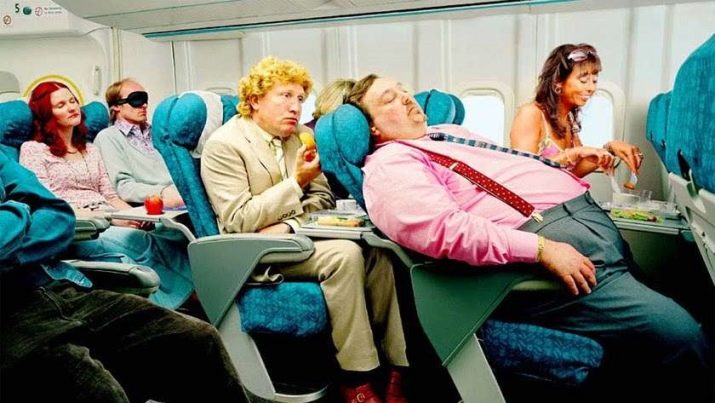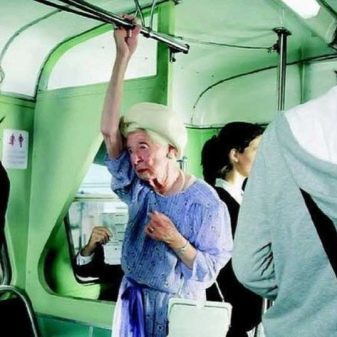Rules of conduct in public transport

For the sake of safety, general education, education and the development of a sense of tact, each person is obliged to know not only the rules of the road, but also the etiquette of behavior in public transport. In order not to miss anything and not to become a party to the conflict, you must have general concepts and follow certain rules described below.

Peculiarities
First of all, you need to remember that public transport is a place of contact for a large number of different people. One way or another, this is part of our life, so maintaining a supportive environment is very important, which certainly contributes to the right behavior. Public transport includes trams and trolleybuses, buses, subways, trains and airplanes.
The main thing is to remember that you are not alone. You should always take into account the personal space of others and try not to cause them inconvenience.


How to behave in railway transport?
First of all, the conductor will check your tickets and documents, it is important not to leave any of this with the accompanying persons, and also after checking not to lose them. It will be useful to get acquainted with the neighbors in the carriage, especially if it is a long-distance train. If any aspects bother you, you can always turn to a guide for help.
Some points must also be taken into account in a long-distance train. Since the trip is long, it is important to take care of food during this time, as well as water. Homemade food can be stored for a short time, so you need to eat it immediately, at the beginning of the trip. Basically, you need to take products that can be stored for a long time (fruits, nuts, canned food, cookies, products brewed with boiling water).


Having a nice conversation will be polite and will help pass the time, but don't bother your neighbors.Men and women must take turns leaving the compartment if one of them changes clothes.
In a common carriage, as in most types of transport, it is not recommended to make noise, disturb neighbors, or run. Although the trip is relatively short, the children cannot sit still for so long, so it is important to control them in such a situation.
You cannot drive on rooftops, in a freight car, or on the steps of a train. It is forbidden to stick out parts of the body from the windows; the stop valve does not need to be touched unless absolutely necessary. You cannot walk on railway tracks, you can cross them in a specially designated place (pedestrian flooring, crossing bridge). Passengers in the upper bins can sit in the lower seats during the day.

General norms of behavior in urban transport
Fundamental rules:
- It's ugly to squeeze into the depths of public transport, pushing everyone with your elbows, you need to respect other people.
- It is necessary to shake off raindrops and snow before you get into public transport, inside it is unacceptable.
- Looking at other passengers is impolite and can also scare them. Looking at a neighbor's phone or book is also inappropriate.
- Watching movies, listening to music and playing gadgets is permissible only with headphones, so as not to disturb anyone.


- Trams can accommodate more people than buses and trolleybuses. Therefore, in it you need to be ready for a large flow of people, try not to impede the rapid movement of large groups.
- Trolleybuses, like trams, stop at every stop. With this in mind, it is worth keeping an eye on who enters the transport - people may enter for whom you will need to give way or need help.


At the entrance
Regardless of the type of public transport, there are procedures that are fair for everyone:
- The very first thing to do is to release the people who leave it. The right to be the first to enter belongs to children, the elderly and women, as well as people with disabilities.
- People in transport should not stand at the door, thereby making it difficult for passengers to enter and exit.
- If difficulties arise at the entrance and help is needed, an initiative from men will be very useful and will show them their best side. However, remember to ask permission first. Circumstances vary and help may not be appropriate.
- When entering, you must not forget to remove bags and backpacks from your shoulders so as not to offend others.



While driving
During the trip, you need to remember about personal space. And not only about your own, but also about the space of other passengers: leaning on others with all your weight and pushing is unacceptable, this can even lead to a conflict. Disrespectful towards other people will speak loudly with their acquaintances, as well as speak loudly on the phone. Personal life will not be the best topic for discussion, profanity is unconditionally banned.
Having a snack during the trip may seem convenient, but it completely contradicts the rules of etiquette. The smell will spread over the entire area, crumbs will fall, and the possibility of staining a neighbor is not excluded.

When leaving
Going out, do not rush forward, try not to interfere with the exit of others. If it is difficult for someone to leave, try to help. A gallant man can give a girl a hand, showing courtesy. Both at the entrance and at the exit, if you see a baby stroller, heavy bags - be sure to offer help, it's hard to cope with this alone.

Who should give way to?
If you see a person who is having a hard time standing, you should certainly make room for him. The unspoken rule is that, first of all, seats should be given to the elderly, pregnant women, passengers with children in their arms and the disabled. But every self-respecting man will certainly give way to a woman. The sense of tact should be more developed in boys and men, who will always help and give way.


In car
When traveling in a car, the passenger must first of all wear a seat belt; special restraints or chairs are provided for children. During the trip, it is not allowed to lean out of windows and hatches, stick out limbs there. Under no circumstances should the driver be distracted by any means. It is not permissible to open the doors of the vehicle or lean on them, this can lead to an accident.


Flight etiquette
In the culture of air transport, things are a little different: the norms of what to do is not clearly established, in order to avoid emergencies. So, let's explain everything in order:
- Exit to the location of the aircraft is prohibited without an escort of airport employees.
- You cannot unauthorized board the aircraft, enter the cockpit.
- Getting up from their seats during takeoff, landing, movement on the ground is prohibited.
Before takeoff, having taken their place, everyone should fasten their seat belt. It is then extremely important to listen to the rules of conduct in the cabin, as well as in case of an emergency.
It is especially necessary to remember the procedure for activating the life-saving appliances. As in all types of transport, noise, shouting, loud conversations are not welcome.


How to behave in an emergency?
Rule number 1 in an emergency is not to panic or spread panic among others. If it is clear that a disaster cannot be avoided, you have to lie on the floor or sit on a seat, cover your head with your hands. After an accident, you need to try to leave the transport, but only after it has come to a complete stop. If it is impossible to do this through the doors, there is an alternative option - to squeeze out or break the glass.
If possible, you need to help other people get out, and then move to a safe distance and call the rescue services.

Memo for children
Various rules of behavior should be instilled in a child from childhood, especially if they affect their involvement in society. Several simple points can be distinguished so that the child remembers them well and knows the basics of etiquette in all types of trips:
- You can wait and enter public transport only at bus stops.
- You can bypass a standing bus or trolleybus only from behind.
- Let the people out before entering.
- There is no need to take ice cream, drinks and any other food that can stain passengers with you.
- Do not push people aside, do not run and do not rush to go to the center of the salon, everything must be done calmly.



- While driving, hold on to the handrails so as not to fall or bump.
- Don't leave trash behind.
- Don't shout or talk loudly.
- Don't stand in the aisle or lean against the doors.
- Make way for the elderly, women, the disabled.
- Do not talk to the driver while driving.


How to behave in public transport, see below.








